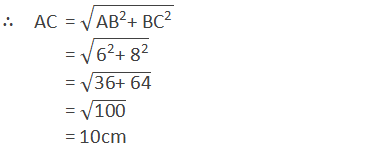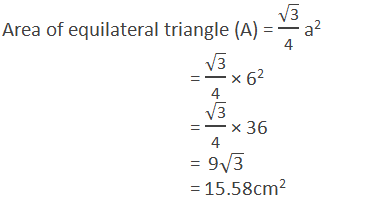
Triangular Prism
A prism having triangular bases is called a triangular prism. A triangular prism has three rectangular faces (lateral surfaces) and two triangular faces (bases) as shown in the figure below.
********************
10 Math Problems officially announces the release of Quick Math Solver and 10 Math Problems, Apps on Google Play Store for students around the world.
********************
********************

Lateral Surface Area of Triangular Prism (LSA)
Let a, b, and c be the three sides of the triangular base, and h be the height of the prism. Lateral surface area of a triangular prism is the area of three rectangular faces (R1, R2 and R3) of the prism as shown in the net of triangular prism in the figure given below.

= ah + bh + ch
= (a + b + c)h
= perimeter of triangular
base × height
= Ph
[∴ Lateral surface area (LSA) = Ph]
Total Surface Area of Triangular Prism (TSA)
Total surface
area of a triangular prism is the sum of the lateral surface area and the areas
of two triangular bases.
∴ Total surface area (TSA)
= LSA + 2 × area of triangular base
= Ph + 2A
[∴ Total surface area (TSA) = Ph + 2A]
The volume of the Triangular Prism (V)
The volume of a triangular prism is
the total space occupied by the prism. It is given by the product of its area
of the base and the height of the prism.
i.e. Volume of the triangular prism(V),
= Area of triangular base × height of the prism
= A × h
[∴ Volume of the triangular prism (V) = Ah]
Worked Out Examples
Example 1: Find the lateral surface area, total surface area, and volume of the given triangular prism.

Solution:
Here,
Base
of the prism is a right-angled triangle,
AB
= 6cm
BC = 8cm

∴ Perimeter of base (P) = 6 + 8 + 10 =24cm
∴ Area of triangular
base (A) = ½ AB × BC
= ½ × 6
× 8
= 24cm2
Height of prism (h) = 20cm
∴ Lateral surface area
(LSA) = P × h
= 24cm × 20cm
= 480cm2
∴ Toral surface area
(TSA) = LSA + 2A
= 480 + 2 × 24
= 480 + 48
= 528cm2
∴ Volume (V) = A × h
= 24cm2 × 20cm
= 480cm3
∴ LSA = 480 cm2, TSA = 528 cm2 and Volume = 480 cm3 Ans.
Example 2: Find the lateral surface area, total surface area, and volume of the given triangular prism.

Solution:
Here,
Base
of prism is equilateral triangle of length (a) = 6cm
∴ Perimeter of base (P) = 6 + 6 + 6 =18cm

Height of prism (h) = 15cm
∴ Lateral surface area
(LSA) = P × h
= 18cm × 15cm
= 270cm2
∴ Toral surface area
(TSA) = LSA + 2A
= 270 + 2 × 15.58
= 270 + 31.16
= 301.16cm2
∴ Volume (V) = A × h
= 15.58cm2 × 15cm
= 233.7cm3
∴ LSA = 270 cm2, TSA = 301.15 cm2 and Volume = 233.7 cm3 Ans.
Example 3: Find the lateral surface area, total surface area, and volume of the given triangular prism.

Solution:
Here,
Three
sides of base triangle are,
a = 13cm
b = 14cm
c = 15cm
∴ Perimeter of base (P) = 13 + 14 + 15 = 42cm
∴ Semi-perimeter (s) = 42/2 = 21cm

∴ Lateral surface area
(LSA) = P × h
= 42cm × 20cm
= 840cm2
∴ Toral surface area
(TSA) = LSA + 2A
= 840 + 2 × 84
= 840 + 168
= 1008cm2
∴ Volume (V) = A × h
= 84cm2 × 20cm
= 1680cm3
If you have any question or problems regarding the Triangular Prism, you can ask here, in the comment section below.
Was this article helpful? LIKE and SHARE with your friends…



0 comments: